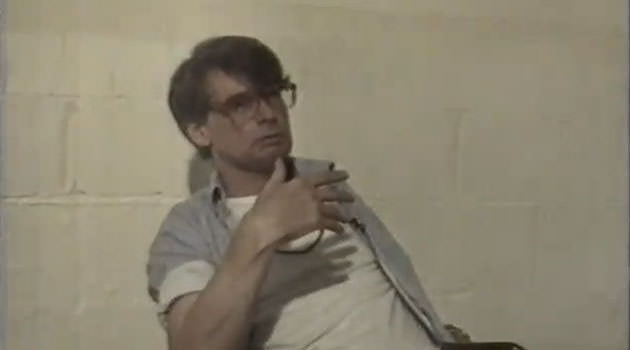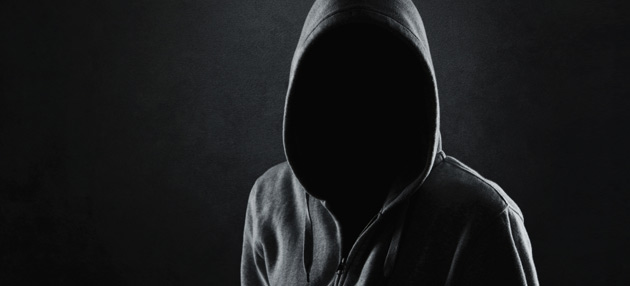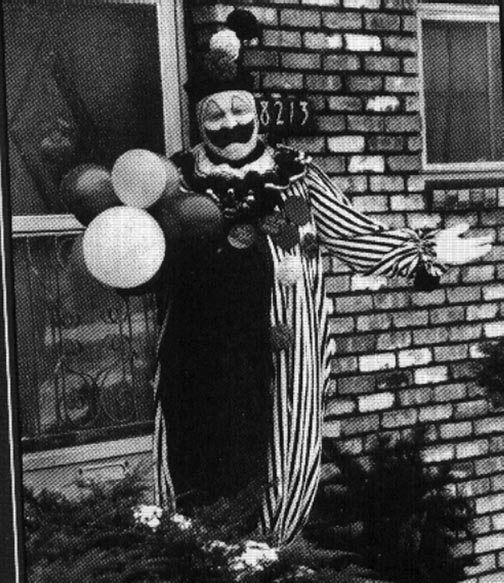 Author Robert Bloch’s novel Psycho was turned into a celluloid masterpiece by Alfred Hitchcock, and became an epoch-making classic among thrillers revolving around the serial killers. Those were the 60s. In the 1990s another milestone was firmly set by the film adaptation of Thomas Harris’ The Silence of the Lambs , in which the portrayal of Dr. Hannibal Lecter by Anthony Hopkins continues to be a benchmark. However, The Silence of the Lambs was not entirely about Hannibal. It was actually about a serial killer who was dubbed as ‘Buffalo Bill’, and was known to kill and skin oversized women before dumping the bodies in the rivers. Hannibal’s help is sought by FBI agent Clarice Starling, played by Jodie Foster, to understand the mind of ‘Buffalo Bill’ in order to nail him before he claims another victim.
Author Robert Bloch’s novel Psycho was turned into a celluloid masterpiece by Alfred Hitchcock, and became an epoch-making classic among thrillers revolving around the serial killers. Those were the 60s. In the 1990s another milestone was firmly set by the film adaptation of Thomas Harris’ The Silence of the Lambs , in which the portrayal of Dr. Hannibal Lecter by Anthony Hopkins continues to be a benchmark. However, The Silence of the Lambs was not entirely about Hannibal. It was actually about a serial killer who was dubbed as ‘Buffalo Bill’, and was known to kill and skin oversized women before dumping the bodies in the rivers. Hannibal’s help is sought by FBI agent Clarice Starling, played by Jodie Foster, to understand the mind of ‘Buffalo Bill’ in order to nail him before he claims another victim.
Apart from several academy awards that both Psycho and The Silence of the Lambs won, there was another remarkable similarity between the two. Psycho ‘s Norman Bates, and Buffalo Bill of The Silence of the Lambs were based on a single serial killer – Eddie Gein.
Even more interesting is the fact that Eddie Gein was formally accused of only two murders, which means that with one victim less he wouldn’t even fall within the description of ‘serial killer’. And still Eddie Gein is no less shocking than any of the other serial killers. Besides, it is difficult to say if Eddie killed only two. In case of serial killers it is seldom possible to ascertain the exact number of victims. And this applies to Gein as well though he was not as active a serial killer as most others.
When the police arrived on November 17, 1957 at the dilapidated farmhouse that was home to Eddie they were looking for him in connection with a robbery at the local hardware store and the disappearance of the owner, Bernice Worden. Eddie was the last customer she had entertained at her store. The junk and rotting garbage dominated the place, which made it nearly impossible for one to walk through the rooms. The stench of rot was unmistakable. The local sheriff, flashlight in hand, was looking into the kitchen when he realized that a carcass was hanging upside down from the beams. It was headless, had been slit opened and disemboweled. Not a pleasant sight, of course. But would not really be that unusual in a place where deer hunting was common, had it not been a human body. It was a woman’s body. It was the body of 50-year-old Bernice Worden.
And when they started searching and looking at things scattered around more closely, they realized that the body of Bernice Worden was not the only shocking thing in the house. They found a bowl that looked strange. It was the top of a human skull. Wastebasket and lampshades also didn’t look normal. Those were made of human skin, and so was the armchair. Female genetalia was found stored in a shoebox. And there was also a belt made of nipples, four noses, a human head and a human heart.
Eddie Gein was the younger of the two children born to Augusta and George Gein. Augusta was a woman of strong beliefs and was nearly fanatical in her religious beliefs. She wanted to raise her boy strictly in accordance with the biblical teachings. She regularly told her boys about the immorality of being with women to discourage them from giving in to the sexual desires they might have so that they were not hurled into hell.
Her views were rigid and she was strict about enforcing them. She looked down upon her husband, George, who was weak and alcoholic, and considered him worthless fellow, who could not even get a decent job. Therefore, she took charge of the finances and began a grocery business that earned the family sufficient money. Eddie’s father, therefore, had no say in the raising of the kids. She not only earned but also saved so that the family could move away from the corrupting influence of the city. And finally in 1914 the family moved to Plainfield, Wisconsin. It was a one-hundred-ninety-five-acre farm and was away from any evil influences whatsoever with the nearest neighbours at a quarter mile from the residence.
Eddie considered his mother epitome of goodness and did her bidding to the best of his ability. She kept her boys isolated from the outside world. But then, the boys had to go to school. Eddie was an average performer at school but was good at reading. His classmates avoided him because he was effeminate and shy. Augusta was never happy with her kids. She thought they were destined to be failures like their father.
Eddie saw his brother, Henry, as hardworking and a man of strong character. He looked up to Henry and emulated him. After their father died in 1940, both the brothers took odd jobs. They were considered hardworking and reliable. Eddie also babysat kids, which he found very enjoyable because for him it was much easier to get along with kids than with the adults.
Eddie’s attachment with their mother was too intense, which worried Henry, and it was a little too much for Eddie to take when he saw Henry openly criticize their mother because to Eddie’s mind his mother was pure goodness.
On May 16, 1944 the brothers were trying to control the fire that was burning dangerously close to their farm. As per the police the two separated in different directions to put off the blaze. They struggled and the night set in. Eddie lost sight of his brother. When the fire was put off, Eddie could not find his brother, which supposedly worried him and he approached the police. When the search party reached the farm, to their utter surprise, Eddie led them straight to Henry, who was lying on the ground, lifeless. The ground beneath Henry was untouched by fire and the body had bruises on the head, which was difficult to explain. However, the police dismissed foul play because nobody believed that shy and effeminate Eddie could kill someone, let alone his own brother.
Now, Eddie was left with only his mother. And that’s all that he actually needed. But things did not stay that way for long and Augusta passed away on December 29, 1945 in the wake of a series of strokes. Eddie was devastated.
He kept to the farm, preserved his mother’s rooms as she left them and stayed downstairs making use of the kitchen area and a small room just off the kitchen, which served as his bedroom.
He spent his spare time reading adventure stories and death-cult magazines, and also indulged in his bizarre hobbies like visiting the graveyard at night. He read the newspapers and his favourite section was Obituaries. He read periodicals about Nazis and South Sea headhunters. Through his reading he learnt how to shrink heads and exhuming bodies, and also learnt about human anatomy.
From obituaries in the local newspapers he found about the recently dead women. He had never been in the company of woman. So, in order to satiate his lust he took to visiting the graveyard and exhuming the dead women. He claimed to have never had sex with the body of a dead woman as they ‘smelled too bad’, but he derived particular satisfaction from peeling off their skins and wearing those. He wanted to know how it feels to have a vagina and breasts. He wanted to be a woman because he was fascinated by the power that women held over men. This was because Eddie saw his domineering mother in all women, which made him fear them. While his mother taught him to stay away from women because they were gateway to hell, Eddie found it difficult to suppress his natural sexual desire. A conflict between deeply ingrained beliefs and natural urges ensued and Eddie did not know how to reconcile the two.
Eddie claimed that the things made from human remains found at the farm were made from the parts of the bodies he exhumed, but the police suspected that he killed more people than two, but there was little evidence that could legally connect him to the people who had disappeared in a sudden spurt. Initially, he did not admit to killing anyone. But later admitted murdering one Mary Hogan and Mrs. Worden. He claimed to have killed both in some sort of a daze.
He pleaded ‘Not Guilty’ by reason of insanity and after a number of psychological tests he was indeed found to be emotionally deficient. He was unfit to stand trial. His condition was attributed to his unhealthy attachment with his mother.
He was sent to a mental institution, and after ten years when he was fit to stand trial, the trial commenced on November 7, 1968. He was found guilty of first degree murder but was acquitted on grounds of insanity because he had been insane at the time he killed. After the trial he was sent to the Central State Hospital for the Criminally Insane, where he spent the rest of his life as a model patient, perfectly amiable. The only thing peculiar about him was the unsettling way he looked at any of the female nurses that fell in his line of vision.
After a long drawn battle with cancer, Eddie died on July 26, 1984.
Originally published as part of ‘Crime File’ in LAWYERS UPDATE in May 2010.






